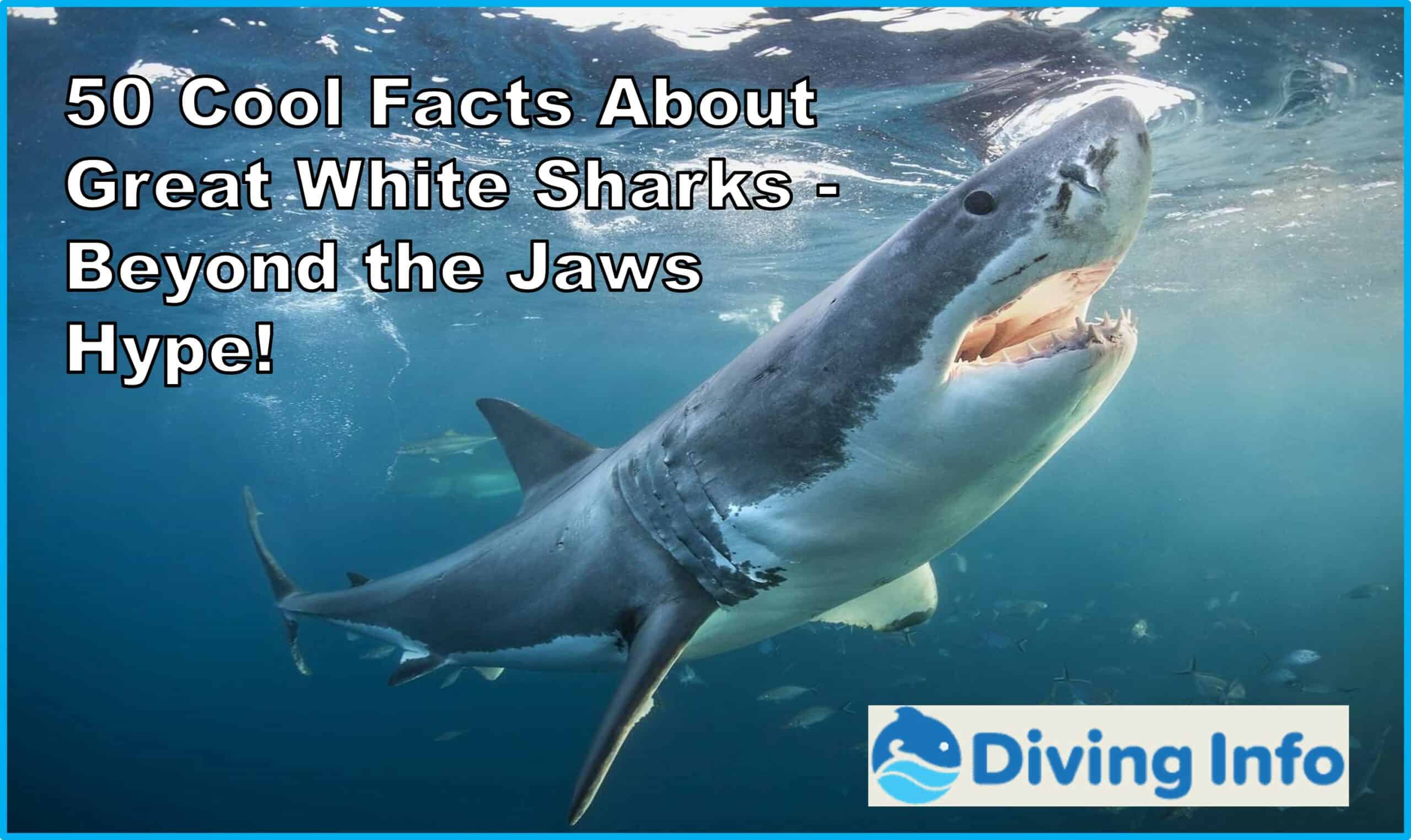*This post may contain affiliate links. As an Amazon Associate we earn from qualifying purchases.
Are you fascinated by the great white shark, but tired of hearing the same old myths and scare tactics? Look no further! In this article, we will delve into 50 cool facts about great white sharks that go beyond the jaws hype.
You’ll learn about their physical characteristics, habitat, and behaviors that make them one of the most impressive predators in the ocean.
First, let’s dispel some common misconceptions. Great white sharks are not the ruthless killing machines they are often portrayed as in movies and media. In fact, they are warm-blooded creatures with a range of unique abilities that make them fascinating to study.
From their powerful bite force to their ability to roll their eyes to protect them during attacks, great white sharks are truly a marvel of nature. So, get ready to learn some amazing facts about these apex predators and gain a deeper understanding of their true nature.
: You may be interested in my other articles about Are there great white sharks in Pensacola or Can you go great white shark diving in Western Australia.
Physical Characteristics
Did you know that great white sharks have up to 300 serrated and triangular teeth lining their mouths, making them efficient predators in their ocean habitat? Understanding shark evolution can be intriguing.
These teeth are arranged in rows and can be replaced throughout their lifetime, ensuring their ability to hunt and feed effectively.
Great white sharks are also known for their size, with the largest recorded weight being 3,110 kgs and the longest reported length measuring 7.4 meters. Females tend to grow much larger than males, and they can live up to 73 years.
When it comes to feeding habits, great white sharks primarily consume energy-rich prey like sea lions and seals, but they are also known to eat other fish, squid, and even smaller sharks.
They can eat up to a quarter of their body weight in just one meal and can go without food for weeks.
Great white sharks are considered to be at the top of the food chain in their ocean habitat and are efficient predators due to their size, speed, and sharp teeth.
Habitat and Behavior
You’ll be surprised to learn that great white sharks are highly adaptable to different water temperatures, and can be found in waters as cold as 12ºC, but not warmer than 24ºC. They are known to live and hunt on the coast of every continent except Antarctica, and are found in large numbers around southern Australia, South Africa, California, and Northeastern United States. They are also found in fewer numbers in the Azores. Great white sharks are considered pelagic fish, and are able to swim to depths of more than 1,200 meters.
What you should know before diving in a shark cage.
To understand the habitat and behavior of great white sharks better, take a look at the following table:
| Habitat | Behavior | Population Trends |
| Live and hunt on the coast of every continent, except Antarctica | Mostly solitary hunters | Estimated to be increasing in abundance in the Northeast Pacific and Indian Ocean |
| Found in large numbers around southern Australia, South Africa, California, and Northeastern United States | Social creatures and travel in a group called a school or a shoal | |
| Found in fewer numbers in the Azores | Able to adapt to different water temperatures |
Despite being given a bad reputation by the movie Jaws, great white sharks are not as fearsome in reality. They are curious creatures and mostly feed on energy-rich prey like sea lions and seals. Due to their need to move constantly, they are difficult to keep in captivity. The population trends of great white sharks are not well known, but they are estimated to be increasing in abundance in the Northeast Pacific and Indian Ocean.
Invitation to Readers
Come share your own diving and snorkeling experiences, and feel free to ask any questions about scuba diving and snorkeling safety. As you explore the vast underwater world, encountering great white sharks can be an exhilarating yet intimidating experience. Knowing how to stay safe and respectful of these magnificent creatures is crucial in making the most out of your diving or snorkeling adventure.
Here are five safety tips to keep in mind when encountering great white sharks:
- Stay calm and avoid sudden movements
- Keep a safe distance and never touch or feed them
- Avoid wearing shiny jewelry or bright colors that may attract them
- Stay in a group and be aware of your surroundings
- Listen to your guide’s instructions and respect their expertise.
By following these safety guidelines, you can enjoy a thrilling encounter with great white sharks while also maintaining a responsible and sustainable approach to diving and snorkeling.
Don’t hesitate to share your own experiences and ask any questions you may have to ensure a safe and enjoyable adventure.

